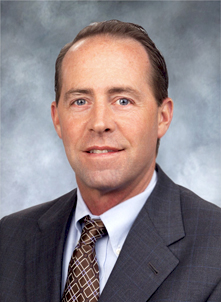PREPPING THE PRIVATE SECURITY SECTOR FOR CALIFORNIA’S INCREASING DEMAND
Tory Brownyard, Brownyard Group, Associate Member
California is now at the center of the nation’s violent crime crisis. February’s Woodland Hills party shooting, and June’s anti-ICE protests have made the threat immediate. By October 12, 2025, California reported 19 mass shootings, causing 11 deaths and 85 serious injuries, CNN reported.
Each incident of violence amplifies the need for private security in California, and the market for private security is growing in tandem with demand. However, it is not just events in the Golden State fueling this trend. High-profile incidents across the country like the shooting of UnitedHealthcare CEO Brian Thompson have driven more executives and companies across industries to ramp up security.
In fact, the global market for private security services is anticipated to grow to $8 billion by 2030 up from $4.62 billion reported in 2024, according to Grand View Research, with North America comprising 75% of the market.
With private security demand increasing at a rapid pace, it’s critical for security agency owners and operators to understand their risk exposures, how best to work with their clients, and how they can optimally set their guards up for success.
Private security can be risky business
Among the many risks private security professionals face, two main categories of workplace risk stand out: physical risks and situation-based risks. Physical risks refer to direct or environmental threats to personal safety—such as dangerous structures, faulty equipment, or workplace violence. Damaged or unstable structures due to earthquakes or fires, such as the LA fires from earlier this year, can pose significant physical risks for private security guards in California.
Alternatively, situation-based risks arise from unpredictable human actions or sudden changes in circumstances, including confrontational incidents. This risk exposure can not only result in employee injury but lead to reputational harm and costly insurance claims. Situational risks are more commonly seen in the news, such as the recent reports of security guards who were stabbed at a beach club in Pacific Beach.
Whether facing faulty equipment or confrontational incidents, private security risks can be unpredictable and damaging. Fortunately, armed with the right knowledge and tools, security agencies can plan and prepare to mitigate most risks.
Managing and mitigating risks while staying compliant
As private security firms navigate risk and liability, the right resources such as a good legal partner and thorough insurance coverage are essential. An informed and thorough legal partner can keep private security firm owners and operators updated on any changes to laws and assist with contract negotiation. Adequate insurance protects against losses from theft, damage, or destruction of assets, and provides coverage against third-party claims for bodily injury, property damage, and personal injury, particularly for firms that interact with clients and the public. In addition to general liability (GL) coverage, a comprehensive insurance program includes workers’ compensation and commercial property to protect the whole business from your employees to your property, as well as excess liability to provide coverage for catastrophic losses. Adequate insurance coverage reduces financial setbacks and enhances operational reputation.
Insurance serves as both a protective measure and a strategic resource in a constantly evolving industry, but it is important to note that a comprehensive insurance policy works best alongside a thorough risk mitigation strategy. Consider the following best practices to build a risk mitigation strategy that works for your firm:
- Build and implement rigorous training program: Private security staff need thorough training. For instance, if a security professional lacks sufficient training in de-escalation techniques during a confrontation that becomes violent, a physical altercation may spiral, leading to liability claims and potential lawsuits. Additionally, as mass shootings continue to rise, active shooter and crisis training can both save lives and ensure private security guards fulfill their contractual duties.When building a training program, consider partnering with specialists in each field to work directly with employees. Specialists can also be consulted to revisit and review a training plan multiple times a year to ensure it is up to date.
- Emphasize the importance of following post orders Employees should be trained to know all post orders, and any other written policies and procedures and be ready to act as necessary. It is not uncommon for employees to go above and beyond and provide services that the security firm is not contracted to provide and that they are not trained in. These actions could expose the security firm to liability that they may not be properly insured for, as some insurance policies exclude coverage for non-security related operations.
- Negotiate contracts wisely: It is essential to consider several factors to achieve a mutually advantageous agreement with your clients. One important consideration is performance issues, which would incorporate a clause for dispute resolution, ensuring that all parties understand their roles and responsibilities. This measure can aid in preventing misunderstandings and safeguarding the interests of both the security firm and the client hiring them for services. It is also important for the security firm to limit their liability to their own negligence and not expose them to claims from the negligence of others.
- Take the time to understand the rules and regulations: In most states, private security firms must obtain a license to operate legally. Licensing bodies have the power to investigate infractions and can revoke licenses if personnel do not comply with legal standards. There are established protocols regarding the application of force by security personnel, which must be followed to foster a secure and ethical environment. Security companies in California must strictly adhere to the California Consumer Privacy Act to avoid legal repercussions associated with privacy violations.
To best understand their unique risks and how to mitigate them, security firms should partner with the right experts and use crucial employer and client resources, along with setting clear policies for every assignment. Guidance from operational and legal advisors, combined with up-to-date knowledge of regulations, ensures effective service.
As the private security market grows, so do risk exposures for private security companies. Those who adapt, understand evolving threats, prepare thoroughly, and work with the right partners will weather uncertainty best.
 Tory Brownyard is President of The Brownyard Group
Tory Brownyard is President of The Brownyard Group





 Debbie Howlett
Debbie Howlett Shaun Kelly joined Tolman & Wiker Insurance Services in 2005. He specializes in all lines of property and casualty insurance for industries including contract security firms, agriculture, construction, oil and gas. Shaun received a BS in Business Administration with a major in Finance from California State University in Fresno, California. He is an active member of several industry associations, including the Association CALSAGA, the Kern County Builders Exchange and the Independent Insurance Agents of Kern County. Shaun can be reached at 661-616-4700 or
Shaun Kelly joined Tolman & Wiker Insurance Services in 2005. He specializes in all lines of property and casualty insurance for industries including contract security firms, agriculture, construction, oil and gas. Shaun received a BS in Business Administration with a major in Finance from California State University in Fresno, California. He is an active member of several industry associations, including the Association CALSAGA, the Kern County Builders Exchange and the Independent Insurance Agents of Kern County. Shaun can be reached at 661-616-4700 or 
 Debbie is an experienced writer with a demonstrated history of working in the security industry. She is based in Montreal, Canada, with TrackTik—a dynamic and cutting-edge tech company that sells cloud-based security workforce management software.
Debbie is an experienced writer with a demonstrated history of working in the security industry. She is based in Montreal, Canada, with TrackTik—a dynamic and cutting-edge tech company that sells cloud-based security workforce management software.